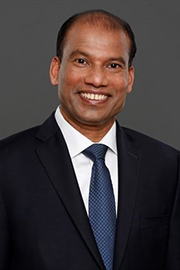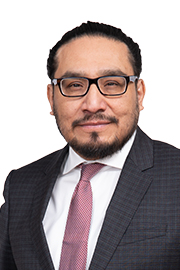- Dec/1/22 3:50:00 p.m.
- Re: Bill 26
My question is to the member from Markham–Thornhill. Thank you very much for your presentation. I’m curious to know: The Ontario Undergraduate Student Alliance has noted that they have been calling for minimum standards; they have been calling for the development of policies that have some clear benchmarks. They have also been calling for consent awareness and consent education. Would you believe that it would support the legislation to have that included?
- Hear!
- Rabble!
- Dec/1/22 3:50:00 p.m.
- Re: Bill 26
Thank you to my colleague the member from Oakville. We have already talked about the sector as a whole, but I’m curious that so many—your question about consultation: We’ve heard enough consultation the great work done by the OUSA, the Ontario union of students, and we’ll not forget about the other groups, like the PEARS Project and the York graduates’ society, that came to committee to provide their support and feedback for Bill 26.
You also have young girls and you heard about your children’s and your girls’ safety when they go to post-secondary education in Ontario. I think this is the right bill. This is a wonderful bill to come to fruition in our history in Ontario. Thank you for that question.
- Hear!
- Rabble!
- Dec/1/22 3:50:00 p.m.
- Re: Bill 26
Meegwetch, Speaker. This afternoon, I would like to talk about schedule 3 of Bill 26, which amends the Ryerson University Act.
I know that we spoke about this earlier in second reading. We know the step that Bill 26 takes in the changing of the name of Ryerson University. We know that it’s only one step towards a fortified change. It is just that: one step.
We know Egerton Ryerson, the namesake of the university, was an architect of the Indian residential school system. We also know that not everybody knows that Indian residential schools instituted a system that was racist and that negatively impacted First Nations across what we know as Canada.
Indian residential schools stripped First Nations children of their cultural identity, their ways of life, their languages, but also, they inflicted physical and verbal harm. Not only that, they caused decades and decades of intergenerational trauma.
I think it’s important to acknowledge these issues. It’s important to know and understand the impacts of these Indian residential schools that are far-reaching for First Nations people and its nations. It’s also important to acknowledge and understand that they extend beyond a singular decade and place. These Indian residential schools, they impacted Indigenous nations. They impacted our nations for generations following, and need I remind this House, the last Indian residential school closed in 1997—1997, Speaker.
Following the decades of systemic racism, systemic oppression, facilitated by the government of Canada—and not only that, many churches across the country—we have to understand that First Nations came together to challenge their experiences in the courts. I talk about this because this schedule, schedule 3 of Bill 26, fulfills only one of the 94 calls to action from the truth and reconciliation report. And then, when I talk about the courts, the courts had previously mandated and allowed the abuse which survivors suffered from to occur.
But also, we have to understand that with strength and resiliency, survivors were able to have their collective experience recognized, which led to the Indian Residential Schools Settlement Agreement and the Truth and Reconciliation Commission. Throughout the years of hearing survivors’ stories, centering their voices, the Truth and Reconciliation Commission developed 94 calls to action. We have to know, Speaker, these calls to action are multi-faceted and work to redress the harm perpetuated by these Indian residential schools.
I’d also like to say that there are a few calls to action that I would like to highlight to acknowledge how reconciliation needs to go beyond just a namesake, beyond just changing the name of the university.
Call to action number 3 calls upon all levels of government to fully implement Jordan’s Principle. Jordan’s Principle is named after Jordan River Anderson, a young boy from Norway House Cree Nation, in his memory. Norway House is in northern Manitoba. The principle, recognized federally by the Canadian Human Rights Tribunal, issued that all First Nations children must have the same accessibility, the same availability of services as any other children in Canada.
Where I come from in northern Ontario, sometimes it feels like a different Ontario. Sometimes it feels like a different Canada. I say that because the First Nations in northern Ontario, in my riding—that accessibility, those human rights and that Jordan’s Principle are not being upheld.
Again, I talk about this because when you do only the minimal changes and not the systemic ones, it is the low-hanging fruit. I talk about that because every year, young people—as young as 13, 14 years old—leave their fly-in First Nation to attend high school in the south. Imagine: I know in the fall we all come out and speak about how our college-age university students leave for school, but it’s different in the north. Grade 9 and 10 students are leaving for high school, leaving home, the reason being that there are no high schools. Not every fly-in First Nation has high schools available because of the unwillingness of the federal government and the unwillingness of the provincial government to step up and provide comprehensive funding for their education. That’s how oppression and colonialism work. That’s how the long-lasting policies of both levels of government, when we talk about Indian residential schools, continue on, because they have to leave home every fall to attend high school.
The lives of these children and youth are sacred. They lack the support they receive, due to being hundreds or even thousands of kilometres away from their families, from their siblings, from their ways of life; from their language, identity and community. And they pay in full with their lives. I say that they pay in full with their lives because, between 2001 and 2011 in my riding, there were seven First Nations children that lost their lives in Thunder Bay while away from home for school. That’s just a way—it has become a way of life.
I’m going to mention some names that we’ve lost because we have no high schools in northern Ontario. I’m going to mention their ages and why these are the one who had to pay with their lives: Jethro Anderson, year 2000—he was 15 years old; Curran Strang, 2005—he was 18 years old; Paul Panacheese, 2006; Robyn Harper, 2007, 18 years old; Reggie Bushie, 2007—he was 15 years old; Kyle Morrisseau, 2009—he was 17 years old; Jordan Wabasse, 2011—he was 15 years old. Sometimes these youth, these children, these First Nations students are referred to as the Seven Fallen Feathers, and I talk about them because that’s what happens.
I know this bill talks about how they want to change, but those are small steps. We need to do better.
Changing the name of the university is important, but reconciliation requires more than words. Reconciliation needs to have an impact with action. Call to action 12 from the TRC identifies that provincial governments need to “develop culturally appropriate early childhood education programs for Aboriginal families”—this despite the fly-in First Nations schools already being inadequately funded, being limited in resources and infrastructure.
I always talk about this. We know that there’s no clean drinking water in 14 First Nations in my riding. A First Nation like Neskantaga is on its 28th year of boil-water advisories. First Nations are expected to do more with less. I’ve seen how they’re treated. I’ve seen how we’ve been treated. We do not matter. That’s how the systems are built.
For example, when a government does not value education workers in First Nation communities, they do not value children’s education. It is the government’s obligation under TRC call to action 12 to support “culturally appropriate early childhood education for Aboriginal families.”
Call to action 16 identifies supporting post-secondary institutions “to create university and college degree and diploma programs in Aboriginal languages.” Reconciliation includes supporting programs that add language revitalization and education initiatives. We are losing our languages at a very fast rate. In 50 years’ time, in 100 years’ time, if we lose a language, I don’t know where we go. We can’t go back to another country. We are here. This is where we’ve been for thousands of years. You cannot continue to make it look as if you’re doing something without really doing anything. It has been done for years, and it has become a way of life for people.
It’s 2022. It’s not too late to look back and realize the inappropriateness of the name “Ryerson” at a university. Again, he was an architect—a school that’s supposed to protect, but a system that took away children from their loving families, a system that took away from their communities and destroyed the fabric of our nations. Schools where children died—even today, we are trying to locate our children and to bring them back home.
Even TMU acknowledged that, for years, they did not understand the concern of the community’s people, of the Indigenous people who worked and went to school at TMU—about the name. The neglect to acknowledge the harm behind the name shows how far the work has come and needed to come.
Work has always been placed on Indigenous people to advocate. We’re always the ones trying to reconcile. I’m always trying to reconcile—why am I the one trying to reconcile? Why, as First Nations, are we trying to reconcile? It should be the government; it should be up to the settlers of these lands to reconcile.
Reconciliation goes beyond namesake. Meegwetch for listening. Reconciliation is more than a name change.
- Hear!
- Rabble!
- Dec/1/22 3:50:00 p.m.
- Re: Bill 26
My question is for the member from Whitby. He addressed this chamber with his usual statesmanlike manner and the rest of us would do well to learn from his example and follow it more often.
My question to him has to do with the imbalance of the relationship between faculty members and students, sometimes described as maybe a fiduciary relationship but, in less technical terms, just an imbalanced relationship, a relationship where one person is more dependent on the other or perhaps influenced by the other. I would like to invite the member to comment on that relationship and ask him, how does he feel that this bill addresses that relationship and what this bill can do in those situations?
- Hear!
- Rabble!
- Dec/1/22 3:50:00 p.m.
- Re: Bill 26
I really appreciate the debate today and the presentations from the member from Markham–Thornhill and the member from Whitby.
I personally had the experience of working for about 20 years at a community college in Ontario and, unfortunately, was aware of situations that this bill directly addresses, situations where an instructor was caught—and I’ll say bluntly, “caught”—and it still took a year and a half to go through the processes to make sure that that person was no longer in a position to teach. Unfortunately, I did find out that he had later taught at another nearby institution.
Madam Speaker, I would like to ask the member from Whitby: This government has a history of creating policies that continually build on previous legislation. Bill 26 is no different, and it builds on the regulations that the minister put into place previously. So can the member please outline how this legislation will build on the previous regulations, as he mentioned in his presentation?
- Hear!
- Rabble!
- Hear!
- Rabble!
- Dec/1/22 4:10:00 p.m.
- Re: Bill 26
I want to thank the member for his words today and his tireless advocacy as a survivor and on behalf of the Indian residential school legacy.
Madam Speaker, there’s been a lot of work done here. In my previous chapter, I was personally involved in a number of schools in communities in the Kiiwetinoong riding to either be seriously rehabilitated or replaced. All too often, we found or realized that part of the success in building those schools, part of the success around water, waste water treatment, was electrification, the capacity and the stability of it. I think we can agree on that.
The member opposite had an extraordinary opportunity in his community just a week ago to turn one switch off of diesel generation and another switch on. And his own chief admitted and said in jubilation that this was an extraordinary opportunity for, amongst others, school and water infrastructure.
Does he agree with the proposition that other corridors in northern Ontario, particularly the central part of northern Ontario that are not covered by Watay Power, offer us up an extraordinary opportunity for prosperity, to electrify those communities so that critical infrastructure like water, sewer and schools can—
- Hear!
- Rabble!
- Dec/1/22 4:20:00 p.m.
- Re: Bill 26
I know that I spoke about this: When we talk about prosperity, I know that there can be no prosperity if we’re still in a place where we’re searching for our children. We cannot have prosperity if we have young girls, young boys—as young as 11 or 12 years old—dying by suicide. There is so much work to be done.
I think electricity is just one piece. I remember for a long time, in my home First Nation, we could not build, we could not expand, because we had our diesel generator over capacity for close to a decade.
I guess my answer is that we could do much better. If you could give us clean drinking water on Neskantaga, I think that would be part of the road to reconciliation.
One of the things that I think is important to talk about is those big issues, as well. I can point back to call to action number 45. It identifies the need to renew and establish treaty relationships based on principles of mutual recognition, mutual respect and shared responsibilities for maintaining those relationships into the future. I think if Ontario started to acknowledge that they are treaty partners—for the First Nations in Ontario, that would be very monumental.
Reconciliation should not have any strings attached to it. Reconciliation requires no-strings-attached support. It requires more of respecting treaties. It requires speaking with nations prior to doing things, because that’s called “free, prior and informed consent” with First Nations. No matter what legislation we talk about, we are the first people who are impacted when legislation happens without talking to First Nations.
- Hear!
- Rabble!
- Dec/1/22 4:20:00 p.m.
- Re: Bill 26
I want to thank my seatmate, my colleague from Kiiwetinoong, for his beautiful speech. I know that talking about it is also very personal for him, because talking about the Seven Fallen Feathers, speaking about children, kids who went to school and had to go far way from their communities because they don’t have schools in their communities, and then losing their lives—it’s difficult.
I know that there are things over the past years that have been worked on, and I think the member did a great job of pointing out how these small steps—he called it low-hanging fruit; it’s something that he mentions to me all the time as well, the low-hanging fruit—don’t really do justice to it.
My question to my colleague is, what would it be—and I think this goes beyond that, because when you’re talking about the need for clean drinking water, the fact that you need schools and all of those things, there’s so much more to be done. Would you be able to just tell us, in terms of some of the concrete steps—you mentioned a few of the reconciliation calls to action.
- Hear!
- Rabble!
- Hear!
- Rabble!
- Dec/1/22 4:20:00 p.m.
- Re: Bill 26
It’s an honour to rise in here and speak on Bill 26, which is a bill that is designed to help address sexual assault on campus. I think we all agree on the goal of this—all of us. Many of us have children who are on campuses now or have been recently on campuses and were absolutely shocked and terrified that this is happening so frequently on campus and that it blows up in the media once in a while.
We need students to be safe when they go to college or university, and in order to achieve that, we need processes for education—and I’m just getting some water. So I’m just going to pause for a minute while I get the water. Thank you so much, Oriana.
I just want to give a shout-out to the pages here. They work here, this is their—
Applause.
Anyway, it’s very clear. I think everybody agrees, and we saw this in the committee reports, that if we’re going to really address sexual assault on campus, we need education programs, we need processes for reporting, we need repercussions and we need supports for survivors. This bill takes some measures on increasing the repercussions for those who are accused or those who are guilty of sexual assault or sexual harassment and violence, but it doesn’t do anything on the education front and it doesn’t do anything on the supports for survivors. This is where the bill comes up short and should be improved.
Bill 26 provides post-secondary institutions and private career colleges with clearer rights to fire employees when they are found to have sexually abused a student, to stop them from being rehired, and bans the use of non-disclosure agreements. So there are some measures in here, but we’ve also heard in committee that some of the measures that are in here may not be constitutional. This is a real challenge with this bill, because if they are not, then what this means is that a student may come forward and make a complaint and the complaint will go through the process. It’s very clear from the literature and it’s very clear from people’s experiences and what was written and we heard in committee is that that re-traumatizes the person. You’re asking somebody to come forward and make the complaint, and then if this bill is not constitutional, it could be—whatever repercussions are imposed upon the perpetrator, the charges could go to court and get overturned because this bill is not constitutional, it’s not within the Charter of Rights. This could actually revictimize the victims. That’s why we asked at committee for the government to check this, to make sure that this bill fits within the Charter of Rights and Freedoms.
Sexual assault is an issue that keeps coming up on our campuses. It’s not a new issue, but it does blow up once in a while in the media. We know that it’s going on all too frequently.
At Western University in September 2021, during the orientation week, there were reports from social media that suggested 30 or more students were drugged and/or assaulted on campus in on-campus housing. In the same week, an additional four women came forward to police about three incidents of sexual assault. This prompted a school-wide walkout, and it occurred with 9,000 students protesting a culture of misogyny on campus. They called for Western to review policies and procedures for handling these situations.
Western University students actually came to depute at committee. They want more than what this bill is offering.
So let’s talk about some facts about sexual assault. Post-secondary students experience a disproportionate number of sexual and gender-based assaults compared to the rest of the population. Forty-one per cent of sexual assault cases are reported by students at post-secondary institutions in Canada. Three out of four students have witnessed or experienced unwanted sexual behaviours while attending a post-secondary institution. One in five women will experience rape, and one in 10 young men will perpetrate rape by the time they graduate. Men are disproportionately the instigators and perpetrators of sexual assault and violence and most often against women. And most sexual assault and gender-based violence is committed by students towards other students and occur in high-risk times and spaces on and off campus.
This is one of the other shortcomings of this bill. It only deals with staff harassment and assaults on students. It doesn’t actually deal with student-on-student, which is the most common type of sexual assault on campus. So we need education, we need processes and we need repercussions, both preventive and punitive measures. The stronger punitive measures that are in this bill also don’t consider that sometimes graduate students are also staff members. So if a graduate student who is also a staff member is accused and found guilty of sexual harassment or violence on campus, they may be dismissed as a staff member, but what will happen is, they’re still allowed to be on campus as a graduate student, and that’s one of the things that’s not addressed in this bill, and so the victims may have to continue to be on the same campus with the perpetrator.
I want to talk about solutions, because we heard a lot in the committee about what needs to be done. There were a number of organizations that came to the committee, and every single stakeholder who came to the committee brought forward changes that they wanted to see in this bill. Unfortunately, the government refused almost all of the suggested amendments.
The people who came to committee said, “We want a trauma-informed, survivor-centric, comprehensive and prevention-focused approach to sexual violence and harassment.” They talked to the committee, they made written deputations and the committee heard from survivors.
A coalition of 24 student organizations that included the Canadian Federation of Students, the Ontario Undergraduate Student Alliance, the College Student Alliance, the University of Ottawa Students’ Union, the University of Toronto Students’ Union and the Wilfrid Laurier University Students’ Union released in August a comprehensive report called Our Campus, Our Safety. They had 10 calls to action. They wanted provincial standards for data collection on campuses, and that is key, because if you don’t have the data, then you don’t know the extent of the problem and you can’t come up with appropriate remedies. They wanted prevention education. They wanted minimum standards for sexual violence policies. And they wanted mandatory review processes.
There were a number of things that these 24 student organizations asked for, and none of these recommendations are included in the legislation. My colleague the member from Ottawa West–Nepean asked the minister if she had read this report from these student organizations, and the minister said she had read the report, but she didn’t give a reason on why none of the recommendations from these 24 student organizations were included in this bill.
The Our Campus, Our Safety report says we need to go beyond stand-alone, individualistic measures, and I will say this is one of my biggest concerns with this legislation, because I was a part-time professor at York University in 2015-16, and at that time sexual assault became a hot item in the media. They were talking about it and there was a call to bring an end to sexual harassment and violence on campus.
The government of the time, the Liberal government, gave the universities and colleges $42 million and they mandated that all of them have sexual assault prevention policies, but the $42 million went to better lighting and to cameras. At the time, all of these student organizations, all of the advocacy organizations all said, “This isn’t going to solve the problem. It’s a step in the right direction, but this isn’t going to solve the problem. We need a comprehensive approach.”
That was 2015-16, and then in 2021 we had that blow-up at Western University where 9,000 students walked off campus talking about a culture of misogyny. And so the Liberal government didn’t listen to the advocates, they didn’t listen to the experts in designing the legislation and their actions back in 2015-16. Sexual harassment and assault continues on our campuses.
And here we are in 2022, and this government has got another piece of legislation. They haven’t listened to the advocates. They haven’t listened to the experts and designed a comprehensive piece of legislation that will actually address these issues. It’s an incredible lost opportunity, because what I’m afraid is going to happen is that this legislation, because it only addresses punitive measures for staff-on-student sexual harassment and assault, doesn’t take a comprehensive approach, and so it’s going to continue and students are going to continue to be victimized on their campuses.
Let’s talk about solutions. One of the solutions has actually been presented by my colleague in the NDP. MPP Wong-Tam, the member from Toronto Centre, has brought forward a piece of legislation called Consent Awareness Week Act. It’s Bill 18. It’s before the House, and it was supported by the member from Toronto Centre, the member from Davenport, the member from St. Paul’s and the member from Kitchener Centre.
The point of this bill is to proclaim the week beginning on the third Monday in September in each year as Consent Awareness Week. The goal of Consent Awareness Week is to engage and create space one week every year for Ontarians to have meaningful, positive, intersectional and age-appropriate conversations around consent, what it means and what it looks like. My colleague from Toronto Centre said, “Sexual assault of any kind causes lifelong trauma and impacts relationships for the rest of the survivor’s life.”
That bill was carried at first reading. What we heard is, that kind of action, that Consent Awareness Week and the education that was implicit in that bill, was asked for by every group that came to committee. These groups included Courage to Act, Possibility Seeds, the YWCA and many gender-based violence experts; they included unions, like OCUFA, CUPE, OPSEU and OSSTF. They all asked for a comprehensive approach to addressing sexual harassment and violence on campus. They asked for education: education on consent, education on prevention, education on safety measures, on what your rights are and education on what to do if something happens. They also wanted education on how to intervene safely and what to do if something happens to you or someone discloses an incident of sexual violence or harassment to you.
I want to talk about consent for a minute. That’s part of the education. We need education about consent. The Canadian Women’s Foundation says that 96% of Canadians believe that sexual activity between partners should be consensual, but only one in three actually know what consent means. They believe consent should be there—96% of people believe there should be consent with sexual activity—but one in three don’t know what it means. That shows there’s this education gap, and that’s an opportunity for this bill to address that gap.
Let’s see. My colleagues, the members from Nickel Belt and Ottawa West–Nepean, in committee moved amendments to mandate prevention education. They wanted it for all students, faculty and staff at publicly funded universities and colleges and at private career colleges, but the government voted against it. It seemed odd. Why would you vote against incorporating prevention education into this bill? The rationale from the government was that they couldn’t incorporate it into the bill without doing consultation on it, but the committee hearings themselves were consultation.
I mentioned a number of organizations that were there, but among the student organizations that were at committee, there was the Ontario Undergraduate Student Alliance, the Canadian Federation of Students, Courage to Act, Possibility Seeds, University of Toronto Students’ Union, PEARS Project, OCUFA and Western University. Those are just some of the people who spoke or made submissions to the committee.
So the committee itself was the consultation. There was no reason not to take what they had said, what they were recommending, and incorporate it into this legislation. Even if there was a reason, if the government had doubts about what direction to take this, there’s a thing in the Legislature called “travelling a bill.” So if the government isn’t sure they’ve got the legislation right, they can take the bill and a group of MPPs, travel all across the province and get feedback on it, and then make recommendations and revamp the bill. That was a possibility here as well, but the government didn’t take it.
The other thing that I want to talk about is supports for survivors. After the blow-up in 2021, Western University launched the Action Committee on Gender-Based and Sexual Violence. It was an independent review to identify policy gaps or procedural failures related to the events of September 2021. The report called for preventative measures.
They appointed a special adviser to address campus culture and safety; they required all incoming students to complete a gender-based and sexual violence education, prevention and awareness training program; they hired an additional gender-based and sexual violence support case manager and education coordinator; they created a training program for Western special constables and other security personnel; and they provided more support to student organizations like fraternities and sororities to address issues around gender-based and sexual violence and helped them to apply for funding through the Canada Research Chairs Program and the Canadian research excellence program.
And so Western University went through this process just last year. They came up with some actions to address sexual harassment and violence on their campus. But the actions that they took, the lessons that Western University learned from their experience, were not incorporated into this legislation, and that’s a real concern. This is a lost opportunity.
Let’s see. What we heard is that there aren’t adequate investments at post-secondary institutions to enhance gender-based violence prevention training and supports. We should be taking an opportunity like this bill to really do everything that we can to prevent future sexual harassment and violence on campuses, and what we’re seeing and what we’ve heard is that this hasn’t gone far enough.
I’m speaking particularly to the members opposite, to the members in the Conservative government here. The goal is clear: The goal is to address and prevent and to deal with sexual harassment and violence on campuses. This bill just doesn’t go far enough. It doesn’t have the comprehensive education. It has some increase in repercussions, but it doesn’t have a comprehensive process for dealing with sexual harassment and violence, and it doesn’t have the supports that survivors need. This is a real lost opportunity.
I’ve got one minute left. I want to talk about the renaming of Ryerson University to Toronto Metropolitan University. This is a measure that’s good, that’s very supportable in this bill. It’s something that needed to happen because, as we just heard from my colleague from Kiiwetinoong, there is long-lasting trauma from the residential school system, and it’s intergenerational trauma. The renaming of that school will hopefully be one small step towards healing and towards real truth and reconciliation for the First Nations people of this land.
So thank you for that part of it. I wish the government had gone further on the sexual harassment and violence piece.
- Hear!
- Rabble!
- Dec/1/22 4:20:00 p.m.
- Re: Bill 26
I’d like to thank my colleague from Kiiwetinoong for his powerful presentation. His words, “reconciliation requires more than words,” is something that is always resonating with me, and I’ve always tried to think about how I can use my place in this House to further action on reconciliation. As the critic for child care for the official opposition, I’ve tabled a motion for the provincial government to develop culturally appropriate early childhood education programs for Indigenous families, which is the Truth and Reconciliation Call to Action number 12.
But going back to this legislation, I’d like to ask the member—I mean, what is in this legislation is a start, but there is so much more that we can do. There are specific steps that can go into this legislation to make it stronger, specifically for Indigenous and First Nations communities. So I’d like to ask his thoughts on what can be strengthened in this legislation.
- Hear!
- Rabble!
- Dec/1/22 4:20:00 p.m.
- Re: Bill 26
I thank the member for his comments. I always appreciate listening to what he has to say on various elements.
As we look at the issues involved in this bill, in talking to my colleagues, we on the government side know the importance of getting legislation crafted well. Bill 26 is survivor-centric, survivor-informed and based on hours of consultation with over 100 different stakeholders. It’s a good example of how legislation should be drafted, with this broad consideration.
I wanted to ask the member if he can consider the positive elements of this bill and join with us in supporting this legislation.
- Hear!
- Rabble!
- Dec/1/22 4:40:00 p.m.
- Re: Bill 26
I want to thank the member from Markham–Thornhill for the question. We are all agreed that we need to deal with sexual harassment and violence on campus, and this bill just doesn’t go far enough. There should be much more. There should be an education component and there should be supports for survivors built into this bill. That’s what was asked for at committee by many, many organizations and experts. Unfortunately, it didn’t get incorporated into the bill, which is a real lost opportunity.
- Hear!
- Rabble!
- Hear!
- Rabble!
- Dec/1/22 4:40:00 p.m.
- Re: Bill 26
Thank you to the member from Spadina–Fort York for your wonderful presentation. I know you also come from an academic background, and I like your research and your numbers. You passionately talk for the marginalized and vulnerable people in our province.
Members of this Legislature have a rare opportunity to all stand together across party lines and support this piece of legislation preventing sexual misconduct. It’s not a partisan issue. So will the member support our government’s bill and encourage all of the members to do the same thing so we can send the clear message that MPPs in Ontario don’t and won’t stand for sexual misconduct in the post-secondary system?
- Hear!
- Rabble!
- Hear!
- Rabble!
- Dec/1/22 4:50:00 p.m.
- Re: Bill 26
I want to thank the member from Spadina–Fort York for his presentation. I listened very intently because I know he brings in a lot of experience and a lot of research for his presentations as well. One of the things he talked about was our amendments that we proposed during committee, Speaker. He talked about the different institutions and almost a decade now where people have come forward and talked about the different types of issues that are faced, and when we look at this measure—and I completely agree. We all have to come together and address this kind of issue, especially when it comes to reconciliation and when it comes to sexual abuse and how we address that.
But when I look at this bill, the first portion of this bill really looks at punitive measures but doesn’t really talk about: How do we prevent it? How do we address it? How do we help students? I wanted to see if he would elaborate a little bit more, in the careers that he’s had, to talk about some of those amendments and measures.
- Hear!
- Rabble!
- Dec/1/22 4:50:00 p.m.
- Re: Bill 26
When you’re talking about education, I mean, it’s very clear: The statistics are clear that 96% of Canadians believe that there should be consent with sexual activity, but one in three don’t know what consent means. So that’s where the gap is. That’s where we really need education, and that’s why I’m really hoping the government will push through the consent awareness act that our colleagues have brought forward, because that is going to mandate education about what consent actually means across the province.
There are some good things in this bill, but this in itself is not going to protect students on campus, and that’s got to be our goal. There should be no holds barred on that, like we’ve got to do—well, we’ve got to do it within the Constitution and the charter, but we’ve got to make sure that we’re doing everything we possibly can to make students safe on campus. This bill just doesn’t go far enough.
The other thing that people were asking for is comprehensive data and province-wide data on this issue, because the data is the key to understanding how broad, how widespread this problem is and then to address—creating real solutions for it.
The question back for me, especially reading the reports coming out of committee, was, why weren’t the recommendations from so many deputants incorporated into the legislation? This bill was an opportunity to address this. The last time that this issue came up in this Legislature was back in 2015-16, when the Liberal government was in. They provided money for cameras and lights and they mandated policies at campuses, but it just wasn’t enough and it didn’t stop the problem. My fear is that this bill is not going to stop the problem.
- Hear!
- Rabble!
- Dec/1/22 4:50:00 p.m.
- Re: Bill 26
I’d like to thank my colleague the member from Spadina–Fort York for his presentation. He is approaching this bill with a lot of experience, both as a graduate student and as a professor in a university.
He talked a bit about the committee hearings, and I’m interested to know more about the stakeholder reactions—if he could share with this House, particularly what students have said need to go into the bill. What were some of the recommendations that came out of the report from Western University that could be added to this bill?
- Hear!
- Rabble!












